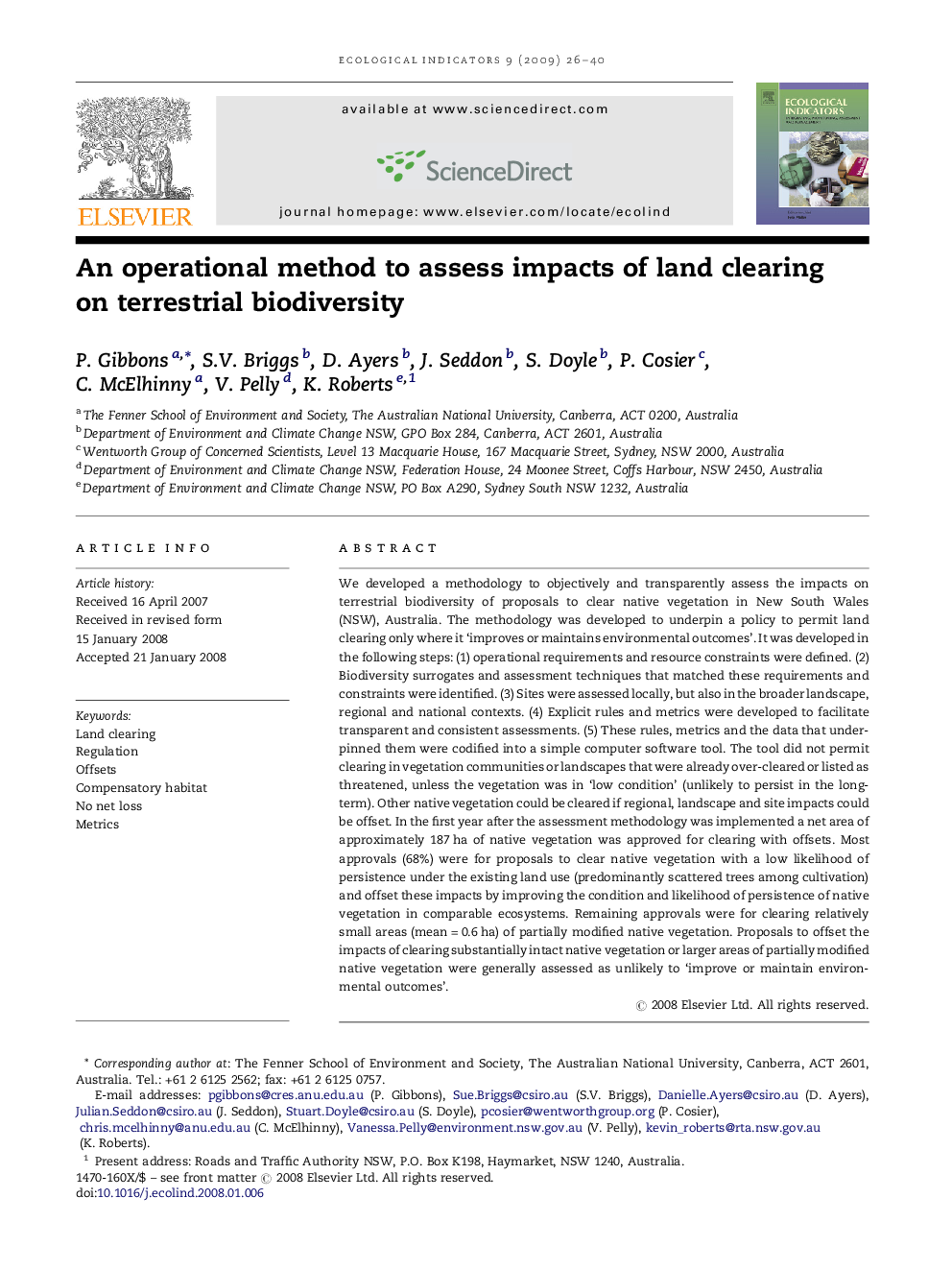| Article ID | Journal | Published Year | Pages | File Type |
|---|---|---|---|---|
| 4374552 | Ecological Indicators | 2009 | 15 Pages |
Abstract
We developed a methodology to objectively and transparently assess the impacts on terrestrial biodiversity of proposals to clear native vegetation in New South Wales (NSW), Australia. The methodology was developed to underpin a policy to permit land clearing only where it 'improves or maintains environmental outcomes'. It was developed in the following steps: (1) operational requirements and resource constraints were defined. (2) Biodiversity surrogates and assessment techniques that matched these requirements and constraints were identified. (3) Sites were assessed locally, but also in the broader landscape, regional and national contexts. (4) Explicit rules and metrics were developed to facilitate transparent and consistent assessments. (5) These rules, metrics and the data that underpinned them were codified into a simple computer software tool. The tool did not permit clearing in vegetation communities or landscapes that were already over-cleared or listed as threatened, unless the vegetation was in 'low condition' (unlikely to persist in the long-term). Other native vegetation could be cleared if regional, landscape and site impacts could be offset. In the first year after the assessment methodology was implemented a net area of approximately 187 ha of native vegetation was approved for clearing with offsets. Most approvals (68%) were for proposals to clear native vegetation with a low likelihood of persistence under the existing land use (predominantly scattered trees among cultivation) and offset these impacts by improving the condition and likelihood of persistence of native vegetation in comparable ecosystems. Remaining approvals were for clearing relatively small areas (mean = 0.6 ha) of partially modified native vegetation. Proposals to offset the impacts of clearing substantially intact native vegetation or larger areas of partially modified native vegetation were generally assessed as unlikely to 'improve or maintain environmental outcomes'.
Related Topics
Life Sciences
Agricultural and Biological Sciences
Ecology, Evolution, Behavior and Systematics
Authors
P. Gibbons, S.V. Briggs, D. Ayers, J. Seddon, S. Doyle, P. Cosier, C. McElhinny, V. Pelly, K. Roberts,
